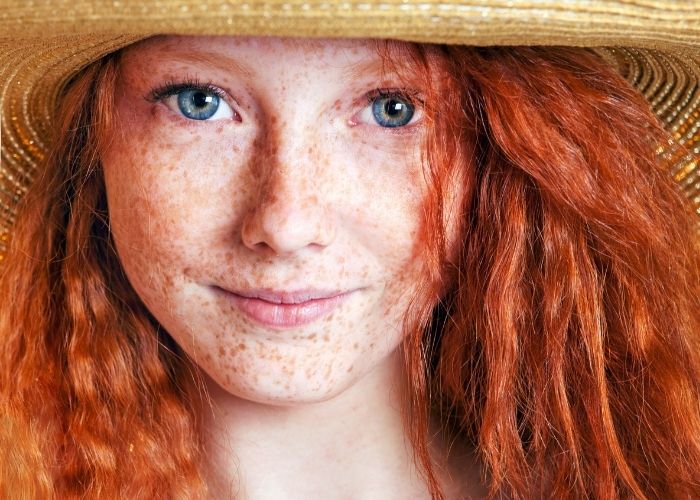Freckles are clusters of concentrated melanin which are most often visible on people with fair complexions.
Genetic in nature, freckles are most common in children prior to puberty, though many adults also have them. However, it is important to note, they do not normally indicate any sort of skin disorder or disease.
The most common location on the body for freckles to form is the nose and cheeks. Although many people have freckles on their shoulders, arms, and other areas that are frequently exposed to the sun. In some cases, freckles are sporadic, individual spots. But sometimes there are several grouped together in a cluster. This makes them appear larger as they cover a greater portion of the skin
Outside in the sun
Being outside in the sun may help cause freckles or make them darker. Furthermore, someone with a light complexion has less melanin in the skin. Melanin is a chemical produced by certain skin cells (called melanocytes) that helps protect the skin from sun damage. It does this by reflecting and absorbing UV rays.
The more melanin you have in your skin, the more tanned you look! People with fair skin have less melanin in their skin, to begin with. But some of their melanocytes make more melanin when exposed to the sun. So instead of easily getting an even suntan, they get freckles.
Follow a sun safety routine
Some people’s freckles fade away almost completely in the winter and return in the summer. Whereas, other people’s don’t change much with or without the sun and can be seen all year round. Freckles also tend to fade as people get older. However, whether you’re freckled or not, be sure to wear sunscreen and follow other sun-safety advice.
Normally, freckles pose no concerns and do not turn into skin cancers. However, they do indicate that the skin is being exposed to the sun. And, as such potential sun damage could occur.
Therefore, it is always best to be aware of early warning signs. If you have a pigmented lesion of any type – whether you think it’s a freckle or a mole – that changes in size, shape or colour, or becomes painful, the best advice is always to consult your doctor.


